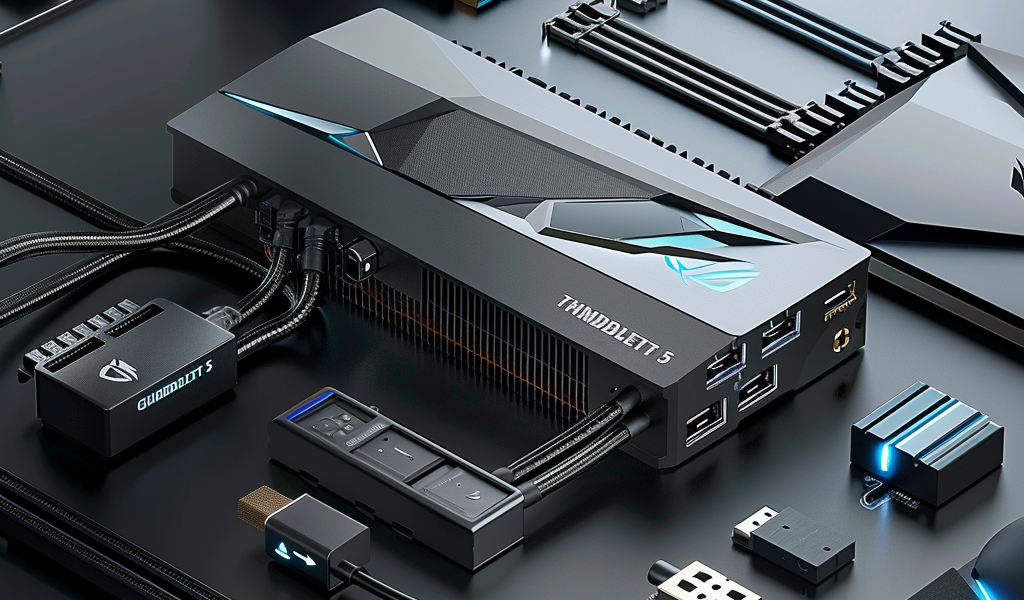Gigabyte has made a significant leap in the tech industry by introducing its first Thunderbolt 5 expansion card, which is designed to enhance connectivity and performance for PC users. Utilizing the Intel JHL9580 Thunderbolt 5 controller and a PCIe 4.0 x4 interface, this expansion card aims to bring the benefits of Thunderbolt 5 technology to a broader range of devices.
The new Gigabyte Thunderbolt 5 expansion card is equipped with three Mini-DisplayPort connectors and two USB Type-C ports, all of which are compliant with the Thunderbolt 5 specification. The package includes three Mini DisplayPort cables along with three internal connectors—two for Thunderbolt and one for USB. This setup not only facilitates easy connection of multiple devices but also enhances the overall performance of connected peripherals.
One of the standout features of Thunderbolt 5 is its impressive data transfer speeds, which can reach up to 80 Gbps. This is a significant improvement over Thunderbolt 4 and USB 4, effectively doubling the bandwidth. In certain scenarios, especially when connecting external displays, the technology can even provide bandwidth of up to 120 Gbps. This allows for a seamless experience when using high-resolution monitors and other high-speed devices.
Gigabyte’s new expansion card supports the connection of up to ten devices in a serial manner, with five devices able to connect per USB-C port. Additionally, it features Power Delivery 3.1, offering up to 100 watts of power per port. This capability is particularly beneficial for users who require robust power supply options for their devices.
With the introduction of this expansion card, Gigabyte aims to make Thunderbolt 5 accessible to any user with a PCIe 4.0-enabled system. The enhanced port speeds allow for the use of external graphics cards, additional monitors, and high-speed external drives, opening up a world of possibilities for gamers, content creators, and professionals alike.
Currently, most available drives are rated at 48-50 Gbps, but the future promises even faster Thunderbolt 5 drives. Although the market for Thunderbolt 5 devices is still in its infancy, it is expected to grow rapidly as more manufacturers begin to adopt this advanced technology. Importantly, the Thunderbolt 5 standard is designed to be backwards compatible, ensuring that users can still utilize their existing Thunderbolt 4 and USB 4 devices.
Gigabyte’s introduction of the Thunderbolt 5 expansion card marks a pivotal moment in the evolution of PC connectivity, promising to enhance performance and expand the capabilities of existing systems. As technology continues to advance, users can look forward to a future where high-speed connectivity becomes the norm rather than the exception.





